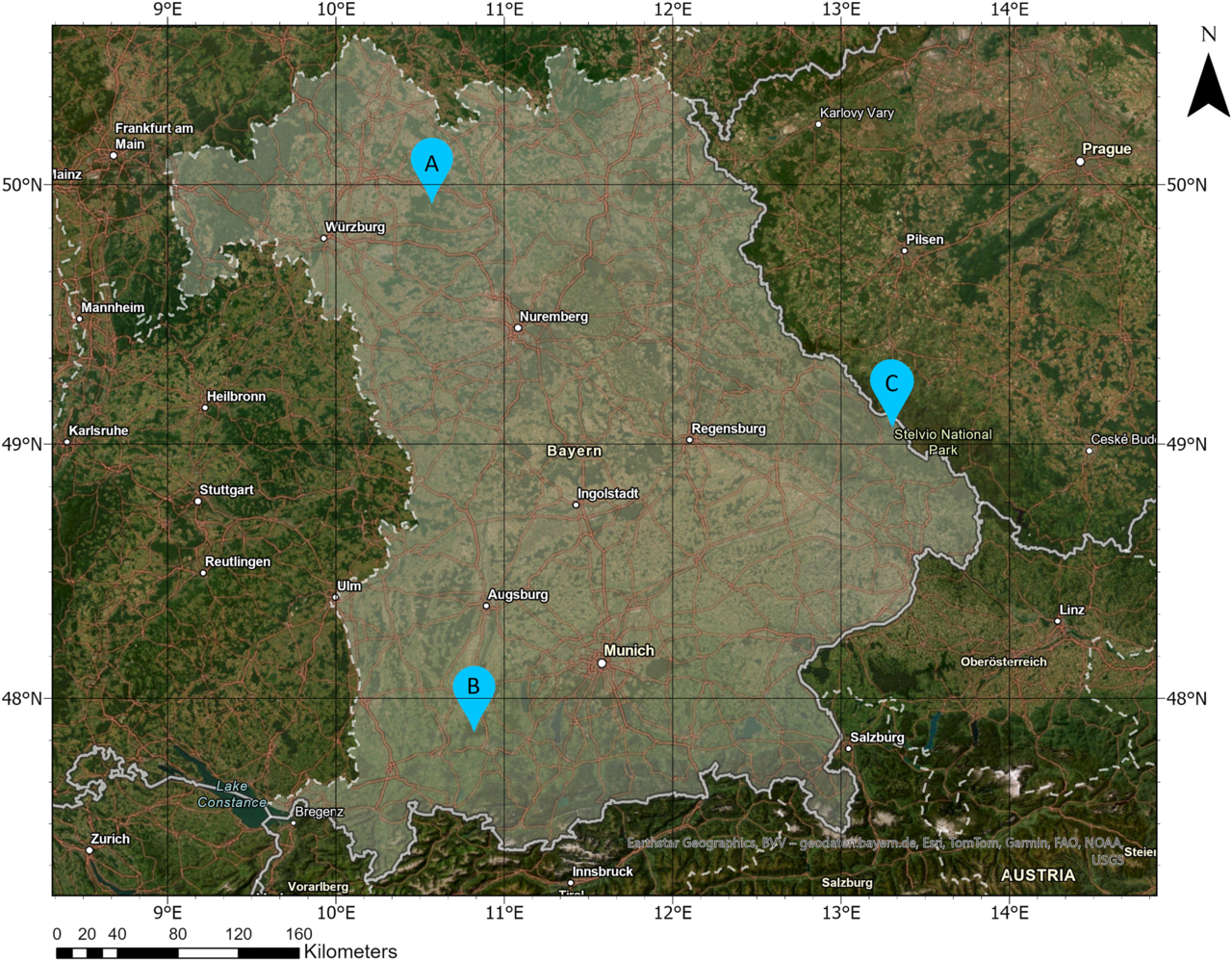Is climate-smart forestry affected by thinning intensity and tree species composition?
A case study in long-term experimental plots of central Europe

Fig. 1. Location of the three experimental sites considered in this study: (A) Fabrikschleichach 15 (FAB15), (B) Sachsenried 607 (SAC607), and (C) Zwiesel 111 (ZWI111).
This study examines how thinning intensity and tree species composition influence Climate-Smart Forestry (CSF) in long-term experimental plots in Bavaria, Germany. Using a composite CSF index based on nine structural and functional indicators, it compares beech, spruce, and mixed forests under varying thinning regimes. The results show that mixed and broad-leaved forests outperform spruce monocultures, particularly in adaptation, while strong thinning improves structural diversity and resilience. The study highlights the importance of long-term monitoring for adaptive forest management and provides practical insights for aligning forestry practices with climate and sustainability goals.
The research applies a composite Index of Climate-Smart Forestry (ICSF) to long-term experimental plots representing beech, spruce, and mixed forests in Bavaria. Using a hierarchical framework of nine structural and functional indicators, the study quantifies how forest type and thinning intensity shape adaptation, mitigation, and socio-economic outcomes. Statistical models were used to trace the temporal dynamics of “forest smartness” and identify key variables influencing each CSF pillar.
The findings show that mixed and broad-leaved forests perform slightly better than spruce monocultures, especially in adaptation. Strong thinning regimes enhance forest smartness by increasing structural diversity and reducing vulnerability to climate stress. Forest damage, growing stock, and slenderness coefficient emerged as the most influential indicators across the three pillars, while roundwood production was key for socio-economic performance. The study underscores the importance of long-term monitoring plots for tracking dynamic forest responses and integrating indicator-based tools into adaptive, climate-aligned forest management strategies.
- Implementation
- Monitoring & Projecting
- Landowners & Practitioners
- Planners & Implementers
- Policy Actors
- Germany

